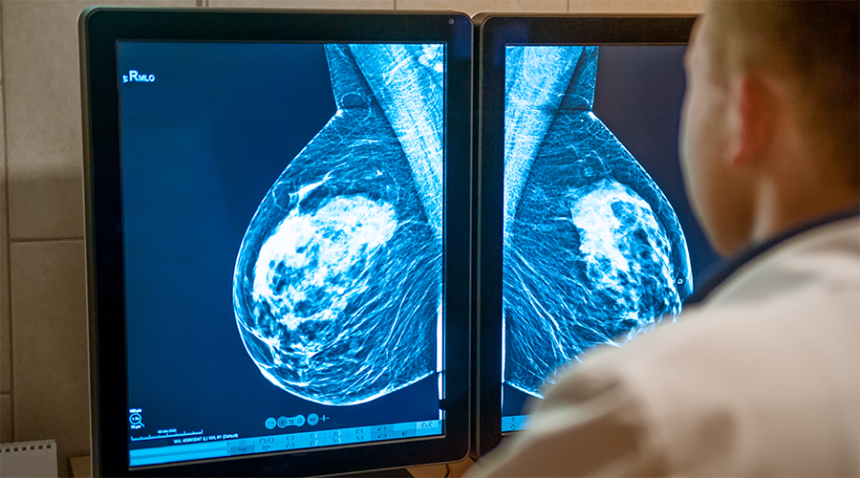3D mammography is recommended for women whose breasts contain more dense than fatty tissue.
You turned 40 and went for your first screening mammogram. The results showed you have dense breast tissue. What does that mean and how does it affect your risk of getting breast cancer?
We talked to Barbara Dull, MD, UNC REX Healthcare breast surgical oncologist, and learned these five facts about dense breasts.
-
Dense breast tissue helps hold your breasts up.
Breasts are composed of dense tissue, which is milk glands and supportive structures such as the ligaments that hold your breasts up, and fatty tissue. When viewed on a mammogram, women with dense breasts have more dense tissue than fatty tissue.
-
Half of all women have dense breasts.
About 50 percent of women have either dense breast tissue or very dense breast tissue.
“About 40 percent will have dense breast tissue and 10 percent will have very dense breast tissue,” Dr. Dull says.
-
Having dense breasts makes it harder to detect breast cancer on a mammogram—unless it is a 3D mammogram.
On a mammogram, your fatty tissue looks black, and your dense tissue looks white. However, cancer and other masses also appear white.
“So the more dense tissue you have, the harder it can be to find a mass amid that dense tissue,” Dr. Dull says.
Fortunately, 3D mammography can help distinguish between the two.
“Instead of just taking two views of the breast tissue, 3D mammograms take multiple images of the breast tissue. And that has been shown to decrease the rate of missing a cancer in women with dense breast tissue,” Dr. Dull says.
If you have dense breasts and also a high risk of getting breast cancer because of family history or other factors, talk to your doctor about adding a breast MRI in addition to your mammogram. The MRI provides a different way of looking at breast tissue.
“Breast MRI is an adjunct to your mammogram, so we wouldn’t skip a mammogram in lieu of a breast MRI, which can miss certain things like little calcifications or calcium deposits in the breast tissue that can be the earliest sign of stage 0 breast cancer,” Dr. Dull says.
-
Having dense breasts slightly increases your chances of getting breast cancer.
There is a slight increased risk of developing breast cancer if you have dense breast tissue.
“We’re not exactly sure what the relationship there is,” Dr. Dull says. “But it’s not a significant risk.”
With no other risk factors, such as family history, most women would not be considered at a significant risk of developing breast cancer based on dense breasts alone.
Talk to your doctor to assess your risk factors, Dr. Dull says.
-
Breast density can decrease with age.
You’re more likely to have dense tissue when you’re young, especially if you are thin, because that means you have lower body fat. Breast tissue is a ratio: less fatty tissue means more dense tissue and vice versa. But hormonal changes as you age affect this ratio.
“For many women, breasts get less dense as we get older,” Dr. Dull says. “However, for some women, especially those on hormone replacement therapy their breasts may stay dense as they get older.”
If you’re concerned about your risk for breast cancer, talk to your doctor. If you need a doctor, find one near you.

